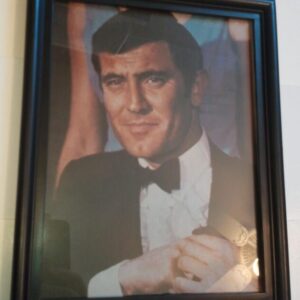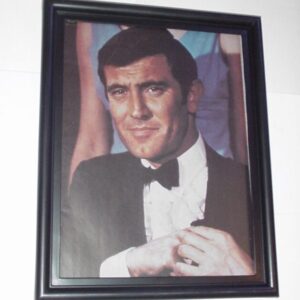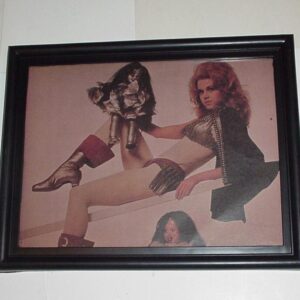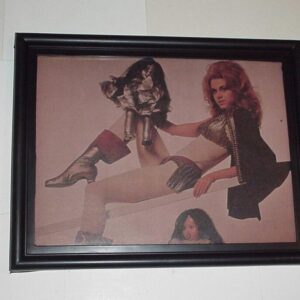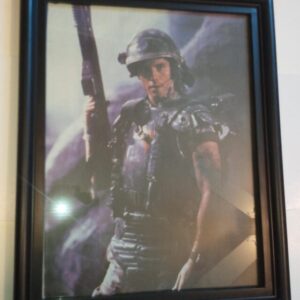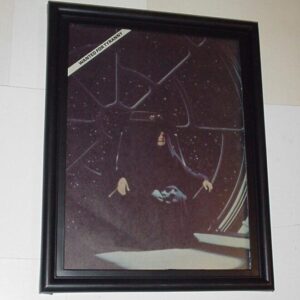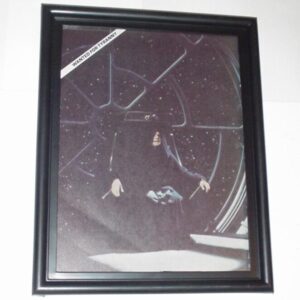Description
Back to the Future was released on July 3, 1985, and became the most successful film of the year, grossing more than $383 million worldwide and receiving critical acclaim. It won the Hugo Award for Best Dramatic Presentation and the Saturn Award for Best Science Fiction Film, as well as an Academy Award, and Golden Globe nominations among others. Ronald Reagan even quoted the film in his 1986 State of the Union Address. In 2007, the Library of Congress selected it for preservation in the National Film Registry, and in June 2008 the American Film Institute’s special AFI’s 10 Top 10 designated the film as the 10th-best film in the science fiction genre. The film marked the beginning of a franchise, with sequels Back to the Future Parts II and III released in 1989 and 1990, as well as an animated series, theme park ride, several video games and a forthcoming musical.
Teenager Marty McFly (Michael J. Fox) is an aspiring musician dating girlfriend Jennifer (Claudia Wells) in 1985 Hill Valley, California. His family is less ambitious; his father George (Crispin Glover) is bullied by his supervisor, Biff Tannen (Thomas F. Wilson), while his mother Lorraine (Lea Thompson) is an alcoholic who mainly reminisces about the past, such as how she met George in high school when he was hit by her father’s car.
Marty meets his scientist friend “Doc” Brown (Christopher Lloyd) late at night in the parking lot of a shopping mall, where Doc unveils a time machine he’s built from a modified DeLorean sports car. The vehicle’s “flux capacitor” is powered by plutonium that he’s stolen from Libyan terrorists. Doc tests the time machine by accelerating it to 88 m.p.h., sending it one minute into the future, and demonstrates the time circuits by entering an example date of November 5, 1955, the day he invented the flux capacitor. Before Doc can make his first trip, the Libyans appear in a van and gun him down. Marty escapes in the DeLorean but inadvertently activates the time machine, finding himself transported to 1955.
Writer and producer Bob Gale conceived the idea after he visited his parents in St. Louis, Missouri after the release of Used Cars. Searching their basement, Gale found his father’s high school yearbook and discovered he was president of his graduating class. Gale thought about the president of his own graduating class, who was someone he had nothing to do with. Gale wondered whether he would have been friends with his father if they went to high school together. When he returned to California, he told Robert Zemeckis his new concept. Zemeckis subsequently thought of a mother claiming she never kissed a boy at school, when in reality she was highly promiscuous. The two took the project to Columbia Pictures, and made a development deal for a script in September 1980.
Zemeckis and Gale said that they had set the story in 1955 because a 17-year-old traveling to meet his parents at the same age arithmetically required the script to travel to that decade. The era also marked the rise of teenagers as an important cultural element, the birth of rock n’ roll, and suburb expansion, which would flavor the story. In an early script, the time machine was designed as a refrigerator, and its user needed to use the power of an atomic explosion at the Nevada Test Site to return home. Zemeckis was “concerned that kids would accidentally lock themselves in refrigerators”, and found that it would be more convenient if the time machine were mobile. The DeLorean was chosen because its design made the gag about the family of farmers mistaking it for a flying saucer believable. In addition the original climax was deemed too expensive by the executives of Universal and was simplified. Spielberg later used the omitted refrigerator and Nevada nuclear site elements in his film Indiana Jones and the Kingdom of the Crystal Skull.
Michael J. Fox was the first choice to play Marty McFly, but he was committed to the show Family Ties. Family Ties producer Gary David Goldberg felt that Fox was essential to the show’s success. With co-star Meredith Baxter on maternity leave, he refused to allow Fox time off to work on a film. Back to the Future was originally scheduled for a May 1985 release and it was late 1984 when it was learned that Fox would be unable to star in the film. Zemeckis’ next two choices were C. Thomas Howell and Eric Stoltz. Eric Stoltz impressed the producers enough with his earlier portrayal of Roy L. Dennis in Mask – which had yet to be released – that they selected him to play Marty McFly. Because of the difficult casting process, the start date was pushed back twice.
Four weeks into filming, Zemeckis determined Stoltz had been miscast. Although he and Spielberg realized reshooting the film would add $3 million to the $14 million budget, they decided to recast. Spielberg explained Zemeckis felt Stoltz was too humorless and gave a “terrifically dramatic performance”. Gale further explained they felt Stoltz was simply acting out the role, whereas Fox himself had a personality like Marty McFly. He felt Stoltz was uncomfortable riding a skateboard, whereas Fox was not. Stoltz confessed to director Peter Bogdanovich during a phone call, two weeks into the shoot, that he was unsure of Zemeckis and Gale’s direction, and concurred that he was wrong for the role.
Fox’s schedule was opened up in January 1985 when Meredith Baxter returned to Family Ties following her pregnancy. The Back to the Future crew met with Goldberg again, who made a deal that Fox’s main priority would be Family Ties, and if a scheduling conflict arose, “we win”. Fox loved the script and was impressed by Zemeckis and Gale’s sensitivity in releasing Stoltz, because they nevertheless “spoke very highly of him”. Per Welinder and Bob Schmelzer assisted on the skateboarding scenes. Fox found his portrayal of Marty McFly to be very personal. “All I did in high school was skateboard, chase girls and play in bands. I even dreamed of becoming a rock star.”
Following Stoltz’s departure, Fox’s schedule during weekdays consisted of filming Family Ties during the day, and Back to the Future from 6:30 pm to 2:30 am. He averaged five hours of sleep each night. During Fridays, he shot from 10 pm to 6 or 7 am, and then moved on to film exterior scenes throughout the weekend, as only then was he available during daytime hours. Fox found it exhausting, but “it was my dream to be in the film and television business, although I didn’t know I’d be in them simultaneously. It was just this weird ride and I got on.”
Michael J. Fox, OC (born Michael Andrew Fox; June 9, 1961) is a Canadian-American actor, author, producer, and advocate. With a film and television career spanning from the 1970s, Fox’s roles have included Marty McFly from the Back to the Future trilogy (1985–1990); Alex P. Keaton from Family Ties (1982–1989), for which he won three Emmy Awards and a Golden Globe Award; and Mike Flaherty in Spin City (1996–2001), for which he won an Emmy, three Golden Globes, and two Screen Actors Guild Awards.
Fox was diagnosed with Parkinson’s disease in 1991, and disclosed his condition to the public in 1998. Fox semi-retired from acting in 2000 as the symptoms of his disease worsened. He has since become an advocate for research toward finding a cure; he created the Michael J. Fox Foundation, and on March 5, 2010, Sweden’s Karolinska Institutet gave him a honoris causa doctorate for his work in advocating a cure for Parkinson’s disease.
Frame is shrinkwrapped until time of purchase. Ships boxed with packing peanuts.
THE PERFECT GIFT!




